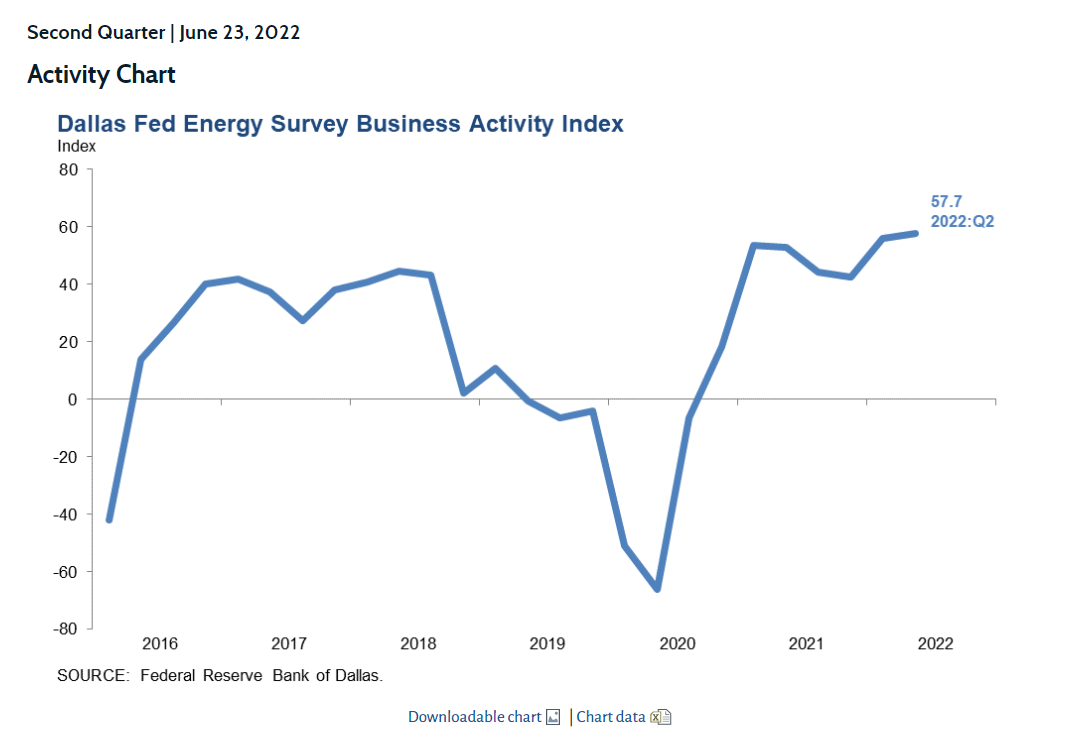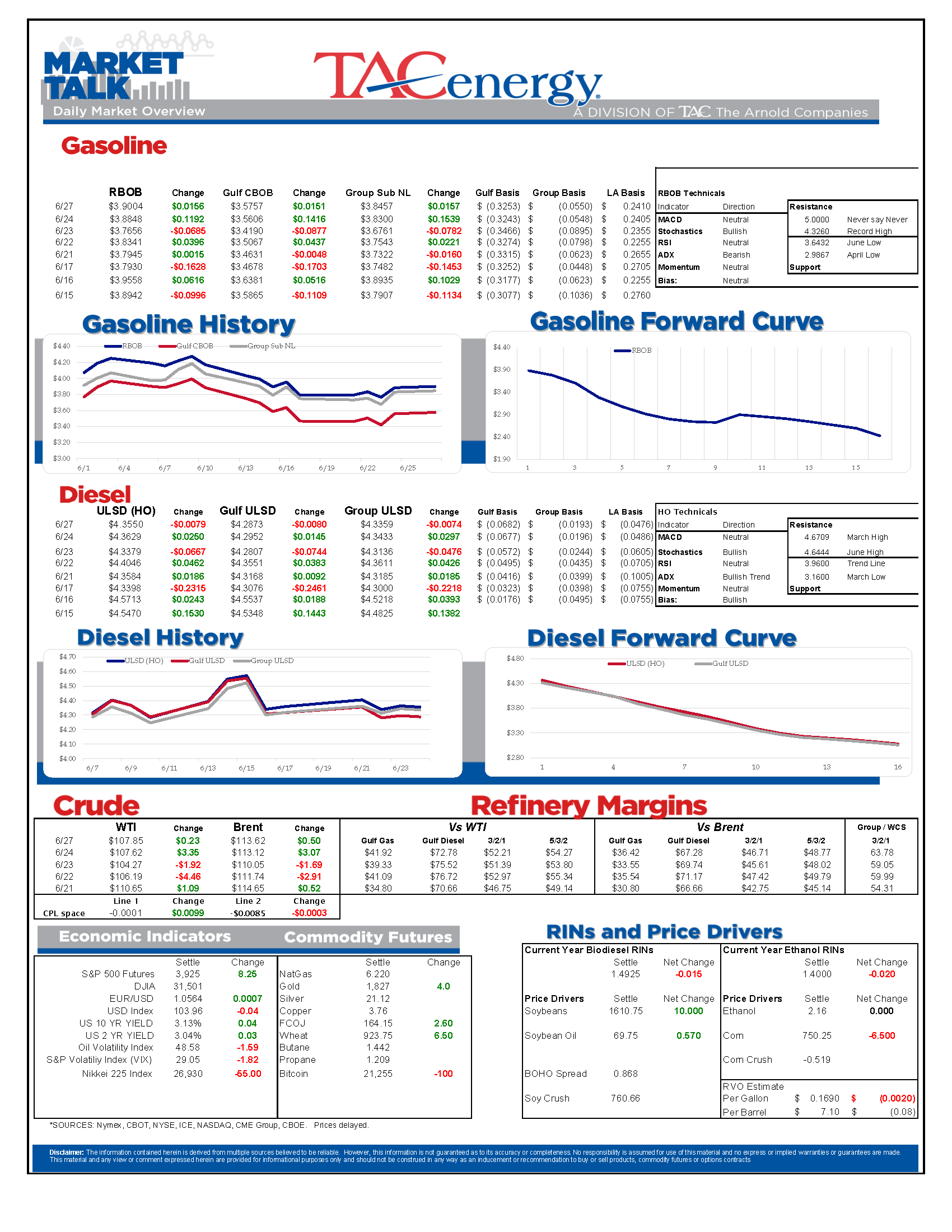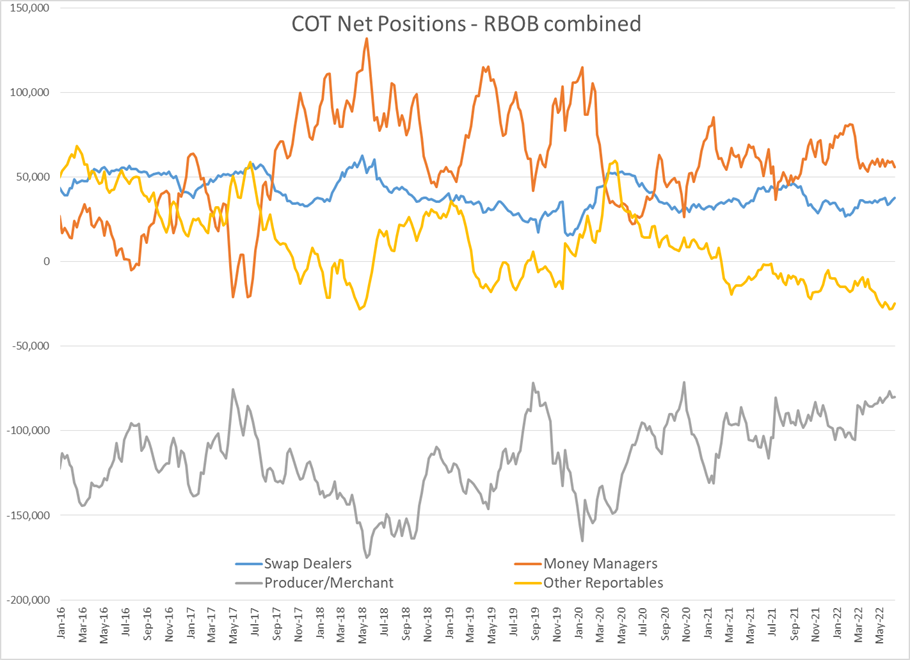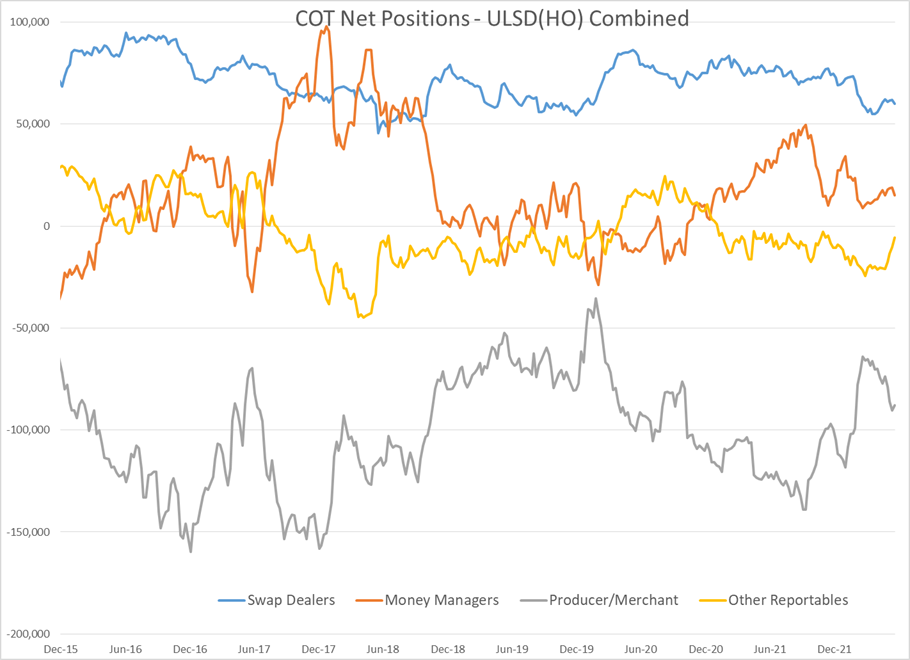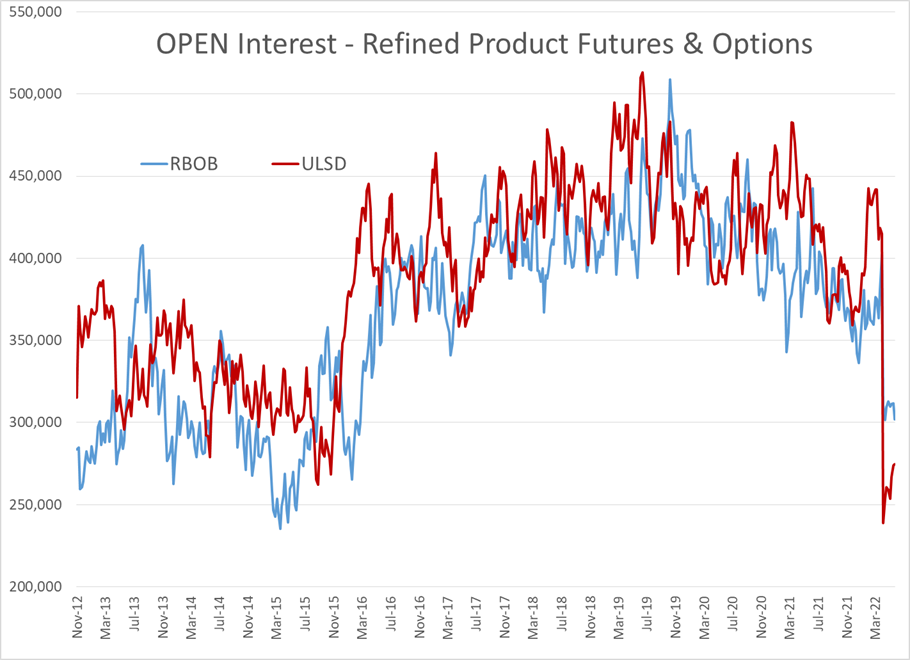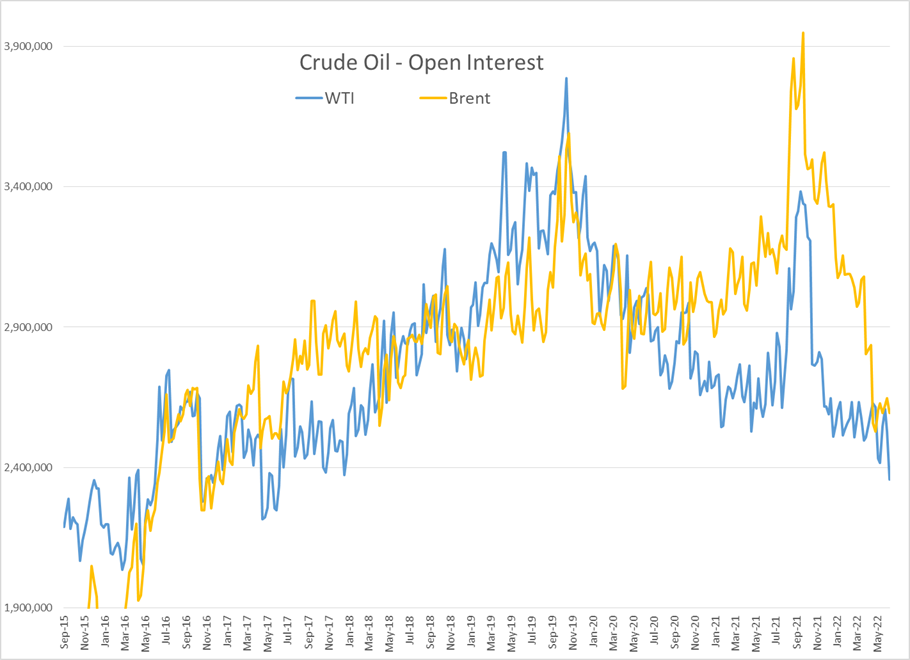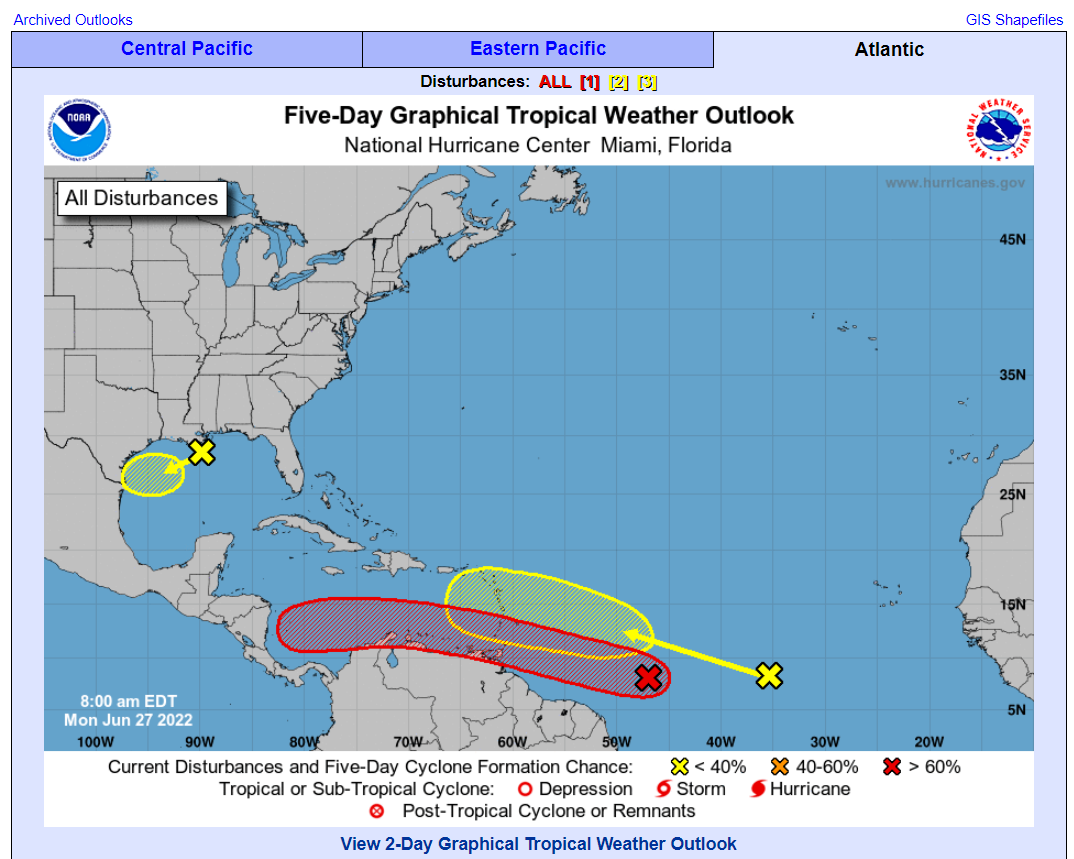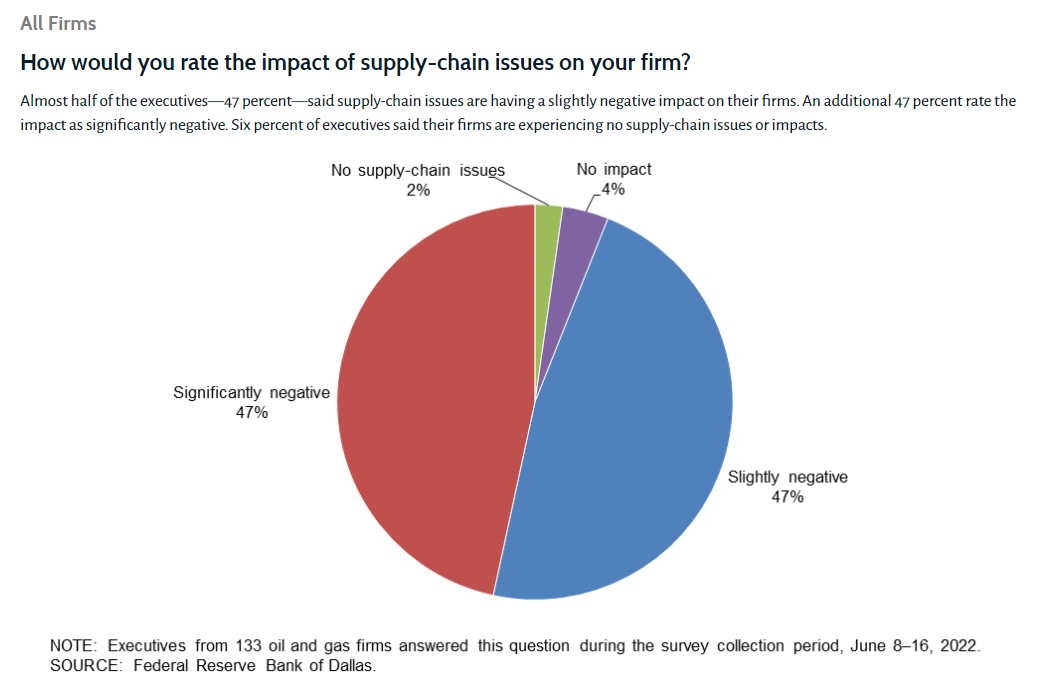Energy Markets Are Starting The Week On A Quiet Note

Energy markets are starting the week on a quiet note as the market seems to be trying to figure out the latest geopolitical dramas like a Russian debt default, more sanctions (that could include a Russian oil price cap) and the restart of negotiations with Iran.
Hedge funds look like they may be throwing in the towel on the petroleum price rally, with money managers making large increases on short positions and reducing their long bets last week. The net length held by the large speculators in WTI dropped to a 2 year low last week, while open interest for the contract reached a 5 year low. While funds pulling out could help explain the price pullback we’ve seen in the back half of June, this change does also leave the complex susceptible to a sharp rally if these new short positions are forced to cover.
Activity in the tropics is increasing after a relatively quiet start to the Atlantic hurricane season. The NHC is tracking 3 potential storm systems this week, and gives high odds that Bonnie will be named in the next few days. The good news for refining country is that storm looks like it will stay well south of the Gulf of Mexico. Another potential system is being tracked off the Texas coast, but so far it’s given low odds of becoming much more than a rain maker that would be welcomed by drought stricken areas.
Baker Hughes reported 10 more oil rigs and 3 more natural gas rigs were put to work in the US last week. That increase brings the oil rig count to a fresh 2 year high but there are still 99 more rigs to add before the total reaches its pre-pandemic levels.
If you’re still wondering why it’s taking so long for oil production to ramp up with prices north of $100, read the Dallas FED’s Energy Survey that was released last week. The report shows that while production activity is at a 6 year high, costs and lead time for materials are both reaching records as supply chain bottlenecks continue to disrupt operations. While supply chain issues are slowing the pace of production, a FT article notes that the US may be the ultimate winner of the energy war.
Click here to download a PDF of today's TACenergy Market Talk.
News & Views
View All
Energy Futures Are Caught Up In Headline Tug-O-War This Morning
Energy futures are caught up in headline tug-o-war this morning with Canadian oil production concerns and a positive US GDP report trying to push prices higher while sinking Chinese demand worries and Gaza ceasefire hopes are applying downward pressure. The latter two seem to be favored more so far this morning with WTI and Brent crude oil futures down ~45 cents per barrel, while gasoline and diesel prices are down about half a cent and two cents, respectively.
No news is good news? Chicago gasoline prices dropped nearly 30 cents yesterday, despite there not being any update on Exxon’s Joliet refinery after further damage was discovered Wednesday. Its tough to say if traders have realized the supply situation isn’t as bad as originally thought or if this historically volatile market is just being itself (aka ‘Chicago being Chicago’).
The rain isn’t letting up along the Texas Gulf Coast today and is forecasted to carry on through the weekend. While much of the greater Houston area is under flood watch, only two refineries are within the (more serious) flood warning area: Marathon’s Galveston Bay and Valero’s Texas City refineries. However, notification that more work is needed at Phillip’s 66 Borger refinery (up in the panhandle) is the only filing we’ve seen come through the TECQ, so far.
Premiums over the tariff on Colonial’s Line 1 (aka linespace value) returned to zero yesterday, and actually traded in the negatives, after its extended run of positive values atypical of this time of year. Line 1’s counterpart, Line 2, which carries distillates from Houston to Greensboro NC, has traded at a discount so far this year, due to the healthy, if not over-, supply of diesel along the eastern seaboard.
Click here to download a PDF of today's TACenergy Market Talk.

WTI And Brent Crude Oil Futures Are Trading ~$1.50 Per Barrel Lower In Pre-Market Trading
The across-the-board drawdown in national energy stockpiles, as reported by the Department of Energy yesterday, stoked bullish sentiment Wednesday and prompt month gasoline, diesel, and crude oil futures published gains on the day. Those gains are being given back this morning.
The surprise rate cut by the People’s Bank of China is being blamed for the selling we are seeing in energy markets this morning. While the interest rate drop in both short- and medium-term loans won’t likely affect energy prices outright, the concern lies in the overall economic health of the world’s second largest economy and crude oil consumer. Prompt month WTI and Brent crude oil futures are trading ~$1.50 per barrel lower in pre-market trading, gasoline and diesel are following suit, shaving off .0400-.0450 per gallon.
Chicagoland RBOB has maintained its 60-cent premium over New York prices through this morning and shows no sign of coming down any time soon. Quite the opposite in fact: the storm damage, which knocked Exxon Mobil’s Joliet refinery offline on 7/15, seems to be more extensive than initially thought, potentially extending the repair time and pushing back the expected return date.
There are three main refineries that feed the Chicago market, the impact from one of them shutting down abruptly can be seen in the charts derived from aforementioned data published by the DOE. Refinery throughput in PADD 2 dropped 183,000 barrels per day, driving gasoline stockpiles in the area down to a new 5-year seasonal low.
While it seems all is quiet on the Atlantic front (for now), America’s Refineryland is forecasted to receive non-stop rain and thunderstorms for the next four days. While it may not be as dramatic as a hurricane, flooding and power outages can shut down refineries, and cities for that matter, all the same, as we learned from Beryl.

